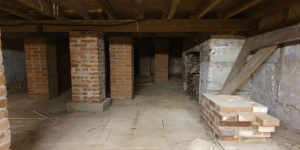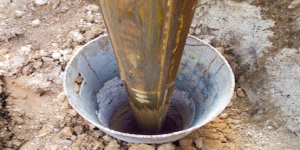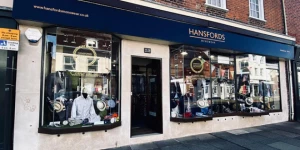Summersdale Neighbourhood Character Appraisal
Introduction
Several villages around Chichester have written Village Design Statements
(VDS) and had them accepted by the Executive of Chichester District
Council (CDC) as material considerations in the determination of planning
applications. The Summersdale Residents Association (SRA) believed a
similar such document would provide a measure of enlightened protection
against inappropriate development in its historic suburb. Detailed research
into the area’s housing stock and its settlement pattern provided the base
data.
Several examples of local VDS were studied and typical contents defined
before it became apparent that they were invariably written in conjunction
with the appropriate Parish Council, the first legitimate layer of local
government, thereby conferring status on the documents. Summersdale is
not a village but a neighbourhood or suburb, so the SRA document came
to be known as a Neighbourhood Appraisal. To enhance its prospects of
acceptance by the Executive, the CDC advised the SRA to develop it in
conjunction with its own Parish Council — namely the Chichester City
Council. The SRA’s subsequent membership of the NE Chichester City
Forum would facilitate closer links with the statutory bodies represented
thereon.
Links with the City Council were established in late 2007 and agreement
reached that the City Council’s Planning & Conservation Committee (P&C)
would assume co-ownership of the document so as to use it as a
template for other groups within the City, each document supporting the
City Council’s next Town Plan. The SRA’s base data was shared with the
P&C Committee, and development of the collaborative document began in
early 2008. The format for the document was devised by a sub-group of
the P&C Committee, and the title changed to Summersdale
Neighbourhood Character Appraisal, in line with the Chichester District
Council’s document — the Chichester Conservation Area Character
Appraisal. The size of the document was prescribed, as was the need for
some form of community involvement.
After adoption by the City Council, the joint Appraisal will be published
and comments invited via newsletters, notice boards, and the web sites of
both the City Council and the SRA. All comments will be welcomed and
reflected in the document to be submitted to the District Council for
approval and wider circulation.
Random articles of interest
Underneath Hansford Menswear

A number of those readers remembered a story about tunnels underneath Hansford Menswear, also in South Street, so we spoke the shop''s owner to find out more.
Matthew Hansford described a blocked-off passage in cellar of the shop, which he believes may have led to the cathedral
Graylingwell Heritage Project
'Graylingwell Heritage Project', 'graylingwell-heritage-project', '
BENEATH THE WATER TOWER
The Graylingwell Heritage Project has been a community based heritage and arts programme located in Chichester, West Sussex.
The original Victorian buildings had a central boiler house with the water tower which is, after the Cathedral spire, by far the tallest building in Chichester. And if you go up to the Trundle and look down on Chichester, the only two buildings you can see are the Cathedral spire and the Graylingwell water tower.
Summersdale FOOTBALL FIELD SURPRISE
FOOTBALL FIELD SURPRISE.
A singular happening lay behind the prosaic news on saturday that the
chuichester and District League football fixture, Summersadale VS Boxgrove, had o be postponed
owing to the ground on this hill suburb of Chichester being unfit.
summeerdale football
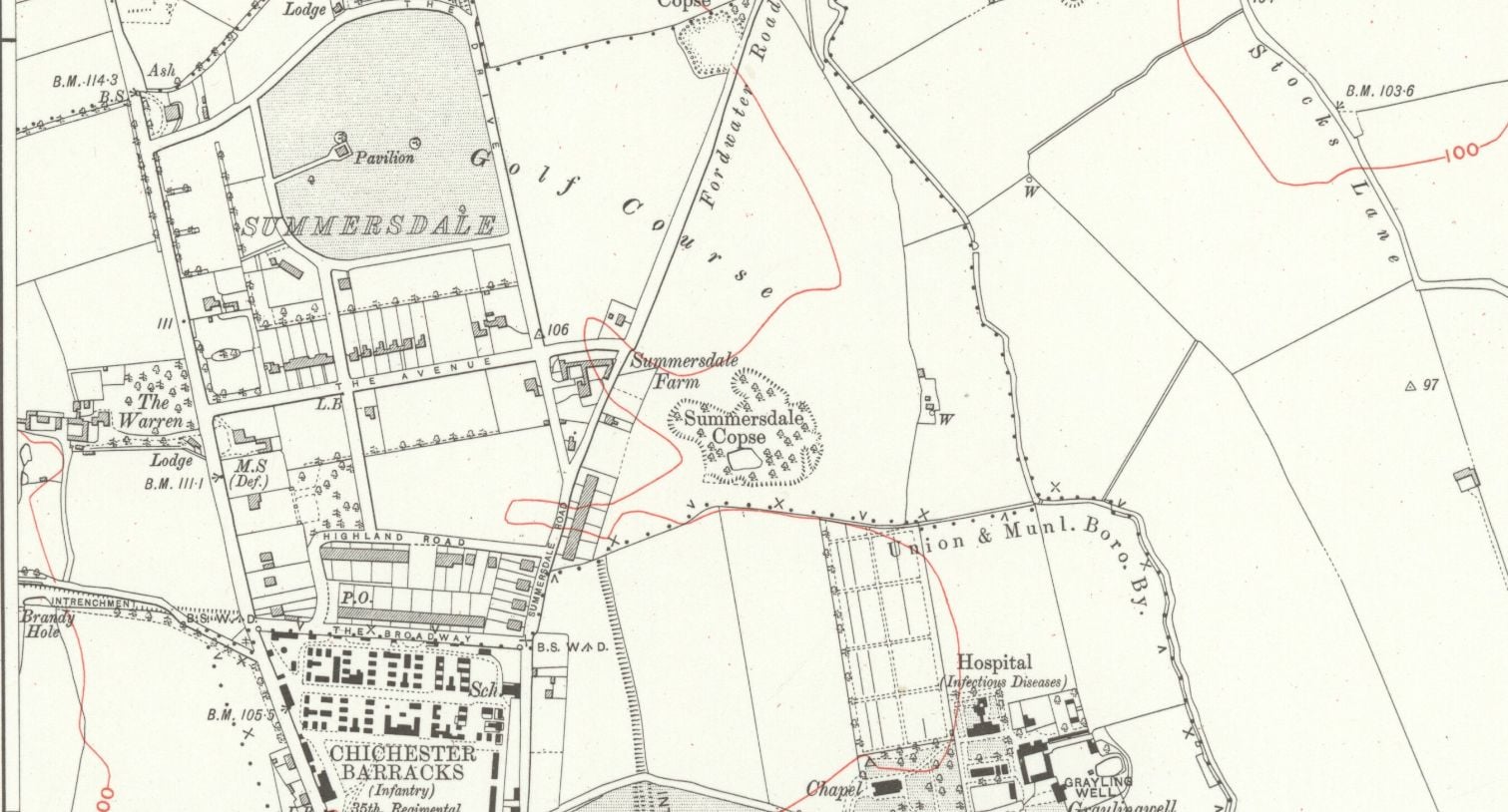
summeerdale football ,I have an update on the old newspaper article relating to Summersdale and the tunnel found under a football pitch. I sent an email to the Summersdale Residents Association, and they were extremely helpful with one of the members being able to identify a location for the site of the pitch. Looking at some old maps and combining the documents from Liam Mandville
regarding subsidence etc. the area between The Avenue and Highland Road (on the Eastern side), does fit well as to the location. Many of the properties built on this site have substantial gardens so there may still be something to find that could explain what was found by the groundkeeper all those years ago? ,5f6f8e5fb6881-116345275_10157348686446892_326855352233187857_n.jpg,5f6f8e5fb7b45-116168775_10157348685396892_1033817068655264665_n.jpg
Why build a cellar

First, there are no maps in the presentation to hidden tunnels , all information is in the public domain and if we get distracted during our searches that is only natural.
I will try and make this as interesting as possible and we will not be getting our boots dirty.
Why have a cellar?
Having a cellar was actually quite an expensive and a time consuming affair. Most people didn't. There was no point unless there was something to store or servants to hide.
The Punch house
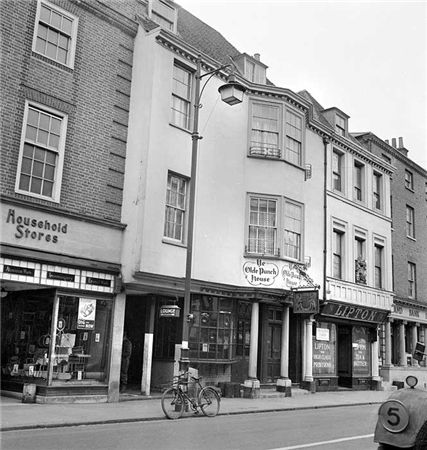
ON THE south side of East Street, close to the Market Cross, lies number 92 which up until fairly recently was The Royal Arms public house (also known as Ye Olde Punch House).
Although the façade dates to the Georgian era, the building is of a timber-framed construction said to date from the 16th century.
Much of the original building survives including highly decorated plaster ceilings displaying the Tudor Rose and fleur-de-lis.
It was once a private town house belonging to the Lumley family of Stansted.
White Horse / Prezzo
Max T
I recall that there is a short length of tunnel (blocked off at both ends) under the old White Horse pub in South St. (now Prezzo restaurant, since 2005). Story in the pub was that it was part of a tunnel running from the Cathedral up to the Guildhall in Priory Park. Although the tunnel is there, I was never sure of its true purpose or the truth of its start / finish. Thought that it was worth mentioning it on here though.
The Buttery
There is rumoured to be a tunnel from the white horse to the buttery and then from the buttery to the cathedral.
Regarding a tunnel from the crypt to the cathedral. Apparently Keats while upstairs being "entertained" watched the monks lock the gate to the cathedral. Now did he have xray specs on ??? That''s the pic of the guy gesturing towards the shelves is where the door way used to be
Featured in Chichester Observer

